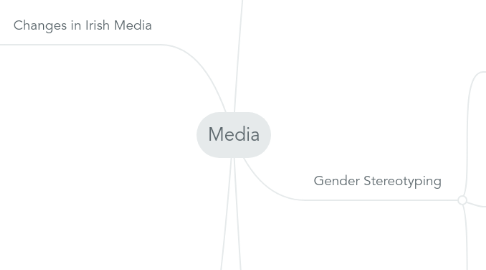Media
da Emma Dillon


1. Changes in Irish Media
1.1. Newspapers: Intertwined with social and political struggle. Therefore it promoted: - Nationalism - Catholicism - Rural life - Irish language - Private property - Demise in mid 1990s
1.2. Radio: Radio Eireann launched in 1926 Established to assist the process of nation building - To promote Irish culture, combat British Culture and attack partition - Has traditionally had a strong relationship with the GAA and the Catholic Church - Emphasis on Irish plays and Irish traditional music and the Irish language 1989 – independent radio was legitimised – RTE loses its monopoly 2007 – 26 independent local commercial radio station (Share et al, 2007
1.3. Television: RTE television arrived on new years eve 1961. It has been linked to a process of modernisation in Ireland. Early days of RTE programming was dominated by American programmes. Later developed Irish dramas which reflected the changing nature of Irish society Certain issues openly dealt with: - Sex - Homosexuality - Female emancipation - Domestic violence - Divorce - Ethnic tensions/diversity It is also argued that it contributed significantly to the decline of church power in Ireland. For the first time the church’s view on certain matters was openly contradicted.
2. Media in Ireland
2.1. 1. Limited ownership – media is usually owned by small number of wealthy individuals, usually men. 2. Advertising Advertisers seek a: ‘supportive selling environment’ i.e. Certain (more entertaining) material is more likely to attract advertisers 3. Sourcing The state is often the source of news This gives politicians and civil servants much power as it can provide statements on emerging government policy. 4. Consistency with dominant ideology Media messages must be consistent with the ‘inevitability and progressiveness of globalisation’.
3. Mass Media
3.1. Mass Media means transmitting information through various channels of communication to a large number of people
3.2. Old Media: Television, books and magazines, one to many: Producers of programmes, magazines etc.
3.3. New Media: Peer to peer networks Two way communication With both producers and consumers of information Facebook, Linkd-in etc.
3.3.1. Uses: - Downloading listening to music/ TV - Reading or watching the news - Communication - Entertainment - Banking - Creating text and video content - Playing games - Blogging - Buying travel services - Government info etc.
3.4. Pros and Cons
3.4.1. Pros: - Widening consumer choice - More media user participation - Greater democracy - More access to all kinds of information and high culture - Social life and social interaction enhanced
3.4.2. Cons: - Media/Cultural imperialism - A threat to democracy - Lack of regulation - Consumer choice - Undermining of human relationships and communities - The digital divide
